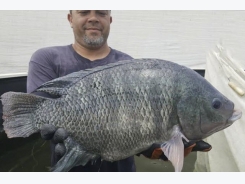More on species and strains

What characteristics are sought for improvement in a strain development programme? How far beyond simple growth improvement must one go?
In any intensive farming situation, breeding for desirable characteristics such as improved growth or deeper body shape can lead to reduced disease resistance. This is potentially disastrous; what is the point of having fast-growing fish if they succumb to disease prior to harvest?
The development of a strain must therefore be multi-faceted, and take into consideration traits other than just improved growth. These include disease resistance, as well as tolerance of cold and sub-optimum water quality. Naturally occurring strains of wild tilapia hold the genetic keys for some of these improvements.
Resistance to disease
The rise of intensive aquaculture goes hand-in-hand with the rise of new diseases. Some closely-related species, or even strains, are more resistant to certain diseases than others, even when kept in the same water. This is a result of complicated genetics governing immunity. Others may carry a disease without expressing symptoms – a hidden and deadly threat.
In the last 20 years, Streptococcus has become the number-one threat to tilapia culture, especially in Asia. As yet, there is no vaccine for the disease, and infected stocks suffer substantial losses. The development of a strep-resistant strain is under scientific scrutiny at present. When importing new overseas strains, it is crucial that documented strep-free fish are selected to prevent importation of the disease.
Resistance to cold
Cold-tolerant strains of O. mossambicus occurring near the limit of their range have the potential to transfer this desirable characteristic. But identifying these founder strains is a time-consuming task, as some populations are genetically stunted. In addition, although they may be cold-tolerant, their slow growth is likely to be inherited too. Therefore, only a fast-growing, cold-tolerant strain should be used as a founder. Even this will not guarantee success in developing a new strain, because not all traits are directly inherited.
As an example, despite the documented cold tolerance of some Eastern Cape strains of O. mossambicus, the characteristic was not inherited by the improved red strain. However, the strain did result in better growth, with improvement over that of either of the original parent stock.
Straining the truth
It is important to remember that random crossing of tilapia will not produce a strain; the process is far more complex. Genetic diversity has to be kept as wide as possible. This means hundreds or thousands of individual breeders. Facilities must be highly organised, with careful documentation and enough time to develop a result. Such a process does not happen over a few months in the backyard, and anyone advertising such a commercial ‘strain’ must demonstrate the use of such facilities and protocols.
A warning about the claimed growth rates of new strains: it was recently claimed that a new strain from the Far East had a growth rate of 800g in 90 days from a 0,5g fry. Such claims must be treated with extreme caution until proven and documented under commercial conditions. Such a weight achieved after 180 days would still be regarded as excellent.
Có thể bạn quan tâm
Phần mềm

Phối trộn thức ăn chăn nuôi

Pha dung dịch thủy canh

Định mức cho tôm ăn

Phối trộn phân bón NPK

Xác định tỷ lệ tôm sống

Chuyển đổi đơn vị phân bón

Xác định công suất sục khí

Chuyển đổi đơn vị tôm

Tính diện tích nhà kính

Tính thể tích ao hồ



 Selecting fish species and strains
Selecting fish species and strains  Optimizing tilapia biofloc technology systems, part 3
Optimizing tilapia biofloc technology systems, part 3